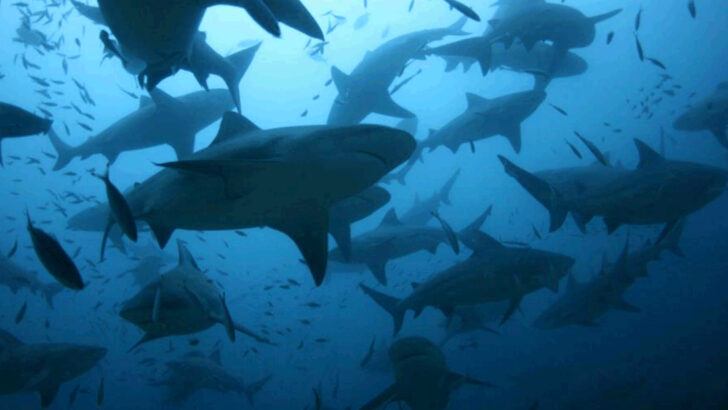Bull sharks don’t play nice—they’re one of the few sharks that will swim right up a freshwater river… and keep hunting.
These aren’t your average ocean dwellers. With jaws built like a hydraulic press and an attitude to match, bull sharks are raw, relentless, and ridiculously well-equipped for survival. Forget the sleek elegance of a great white—bull sharks are brawlers.
They cruise murky waters where most predators wouldn’t dare. They’ll hunt in packs, strike with explosive force, and vanish just as fast. Oh, and did we mention they can thrive in lakes? Yeah. Lakes.
This isn’t just about a scary fish—it’s about one of nature’s most unpredictable predators. These 15 facts pull back the curtain on a shark that rewrites the rules and refuses to stay in its lane.
Adaptability to Various Environments
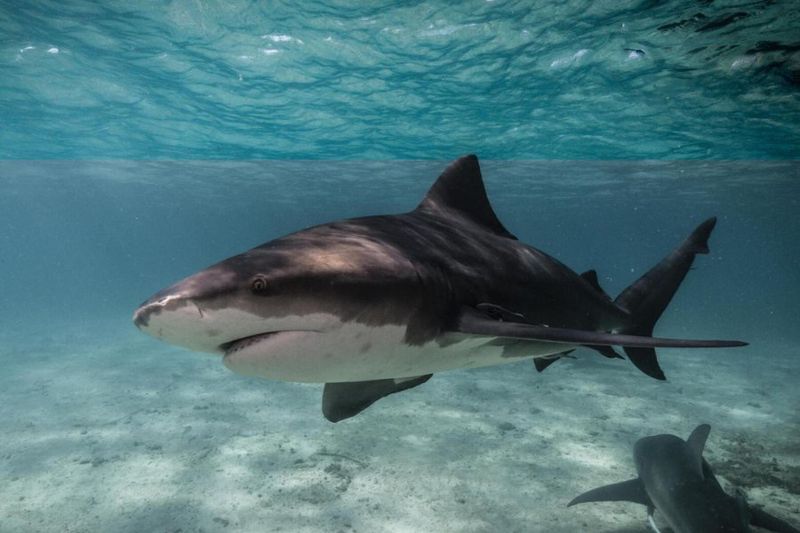
Bull sharks are incredibly adaptable, thriving in both salt and freshwater environments. This unique ability allows them to inhabit a variety of locations, from the open ocean to rivers and even lakes.
Unlike most shark species, bull sharks can regulate the salt levels in their bodies, making them perfectly equipped for life in diverse aquatic environments.
Their tolerance for different salinities is not just a survival mechanism, but a strategic advantage over other predators, enabling them to exploit different prey and evade competition. This adaptability highlights their resilience and cunning nature.
Robust Physical Build
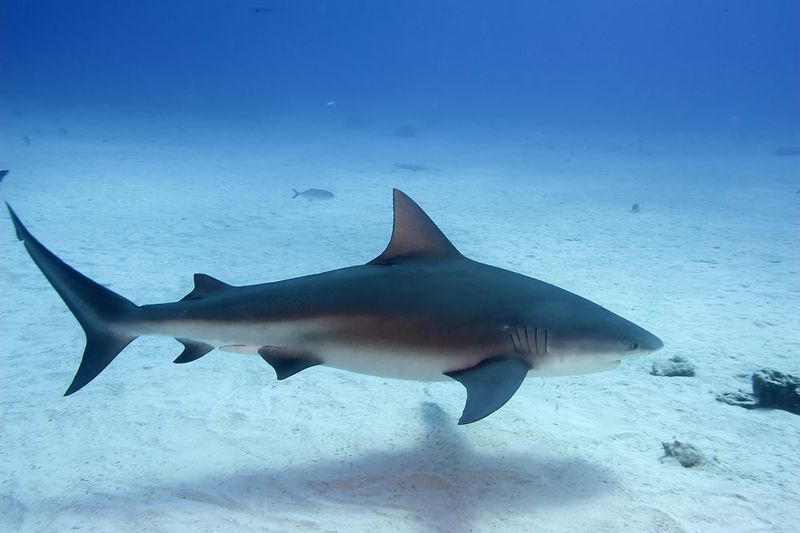
The bull shark boasts a robust physical build, characterized by a stout, muscular body and a broad, flat snout. This physiognomy is not just for show; it’s a testament to their strength and power in the water.
Their body shape allows for agile movements, crucial for hunting and navigating through various environments.
Their impressive physique is complemented by powerful jaws equipped with sharp, serrated teeth, perfect for gripping and tearing through prey. This combination of strength and agility makes them formidable predators, feared by many marine creatures.
Aggressive Behavior Traits

Known for its aggressive behavior, the bull shark ranks high on the list of the most dangerous sharks to humans. This aggressive nature is often attributed to their territorial instincts and competitive drive for resources.
Bull sharks are bold and often patrol shallow waters, leading to frequent encounters with humans. Their unpredictable nature and readiness to attack when threatened or provoked make them a subject of intrigue and caution among ocean enthusiasts and researchers alike.
Understanding this behavior helps in managing and conserving these creatures responsibly.
Unusual Feeding Habits
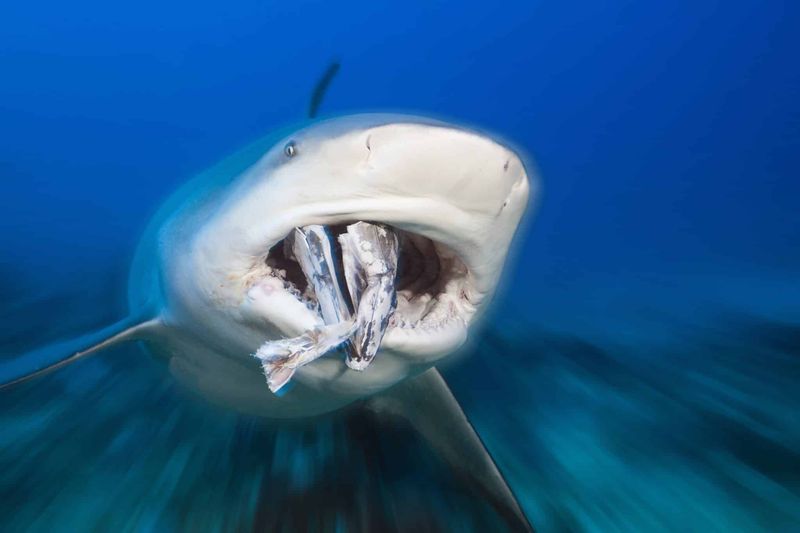
Bull sharks exhibit unusual feeding habits, often preying on a wide range of animals, including fish, dolphins, and even other sharks. Their diet is diverse, allowing them to adapt to different environments and prey availability.
This opportunistic feeding behavior is accompanied by a unique hunting style, characterized by stealth and surprise. Bull sharks are known to use the element of surprise to catch their prey off-guard, showcasing their intelligence and adaptability as hunters.
Their feeding habits play a crucial role in maintaining the ecological balance in their habitats.
High Tolerance for Fresh Water

Bull sharks have an extraordinary tolerance for freshwater, a rare trait among sharks. This ability allows them to travel far upstream in rivers, sometimes hundreds of miles from the ocean.
Their kidneys and special glands enable them to adjust to varying salinities, making this feat possible. This freshwater adaptability opens up new territories for hunting and breeding, reducing competition with other marine predators.
It also leads to surprising encounters far from traditional shark habitats, intriguing researchers and broadening our understanding of shark ecology.
Unique Reproductive Strategies

Bull sharks follow unique reproductive strategies that ensure the survival of their young. Females give birth to live young, known as pups, in shallow nursery areas that provide protection from predators.
These nurseries are typically in coastal or riverine environments with plenty of food and shelter. The choice of nurseries helps in reducing predation risks, giving the pups a better start in life.
This strategic approach to reproduction highlights the bull shark’s adaptability and commitment to ensuring the continuation of their species in challenging environments.
Territorial Nature

Bull sharks are known for their territorial nature, often guarding specific areas against intruders. This behavior is crucial for maintaining access to resources and ensuring the survival of their young.
They are often observed in shallow coastal waters, where they patrol their territory vigilantly. This territorial behavior sometimes leads to aggressive encounters with other marine creatures and humans.
Understanding this aspect of their behavior is essential for managing human-shark interactions and conserving marine ecosystems.
Highly Developed Senses

The bull shark possesses highly developed senses that aid in its survival and hunting prowess. Their keen sense of smell allows them to detect blood from miles away, while their acute vision is adapted to both daylight and murky water conditions.
Additionally, they have special sensory organs called ampullae of Lorenzini, which detect electromagnetic fields produced by other creatures. These capabilities make them highly effective hunters, able to thrive in a variety of environments.
Their sensory acuity underscores their evolutionary success as apex predators.
Migration Patterns

Bull sharks exhibit fascinating migration patterns, often moving between estuarine and marine environments. This migration is usually driven by breeding, feeding, and environmental conditions such as water temperature.
During warmer months, bull sharks are known to migrate towards estuarine areas, while in colder periods, they move to deeper ocean waters. Understanding these migration patterns helps in conservation efforts and provides insights into their ecological roles.
Their journeys reveal the connectivity between diverse aquatic habitats and the importance of conserving these pathways.
Impact on Local Ecosystems
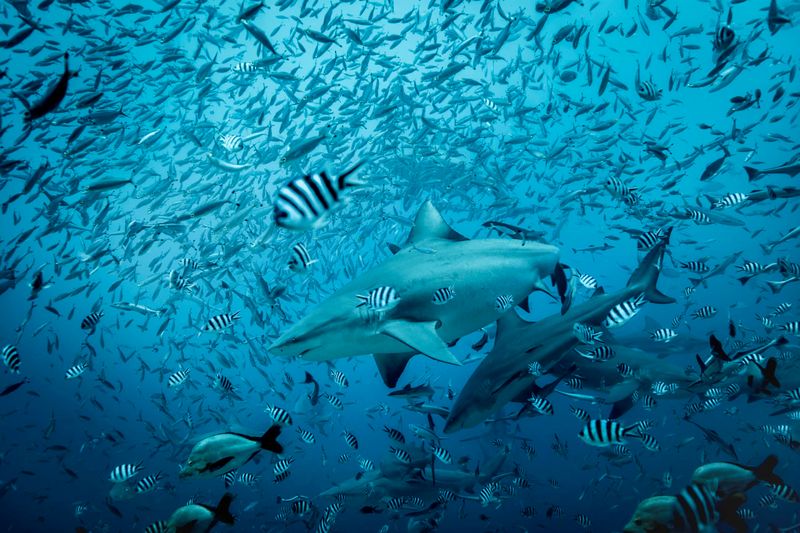
As apex predators, bull sharks play a vital role in maintaining the balance of marine ecosystems. They help control the population of various prey species, preventing any single group from dominating the ecosystem.
Their predatory activities also promote biodiversity by ensuring a healthy balance of species. This ecological role is crucial for the health of the oceans, highlighting the importance of conserving bull shark populations.
Understanding their impact on local ecosystems can guide conservation strategies and foster appreciation for their role in marine biodiversity.
Distinctive Appearance

The distinctive appearance of the bull shark makes it easily recognizable among other shark species. Their broad, flat snout and stocky body are well-suited for their predatory lifestyle.
This design allows them to navigate through both murky river waters and clear ocean settings efficiently. Their body coloration, typically gray on top and white underneath, provides camouflage against predators and prey alike.
This distinctive look not only aids in hunting but also in avoiding detection, reflecting their evolutionary adaptation to diverse environments.
Social Behavior

While often seen as solitary hunters, bull sharks occasionally exhibit intriguing social behaviors. They have been observed forming small groups, particularly during migration or breeding seasons.
This social interaction may provide advantages such as improved hunting success and protection against threats. Their social dynamics are a subject of ongoing research, shedding light on the complex behaviors of these enigmatic creatures.
Observing their social behavior challenges the traditional view of sharks as solitary predators and opens new avenues for understanding their ecological interactions.
Speed and Agility

Bull sharks are renowned for their speed and agility, which are key to their success as predators. Their streamlined bodies and powerful tails enable them to make rapid movements and swift turns, essential for catching prey and evading threats.
Their agility is not only crucial during hunting but also in navigating through complex environments such as reefs and mangroves.
This physical prowess highlights their adaptability and efficiency in various habitats, ensuring their survival and dominance in the aquatic food chain.
Role in Culture and Mythology

Bull sharks have captured the human imagination and feature prominently in various cultures and mythologies. Their presence in folklore often symbolizes strength, danger, and the untamed nature of the sea.
In some cultures, they are revered and feared, seen as powerful spirits of the ocean. These cultural connections underscore the shark’s impact on human societies, influencing perceptions and inspiring tales that endure through generations.
Exploring these cultural narratives enriches our understanding of the complex relationship between humans and these formidable creatures.
Conservation Status and Efforts
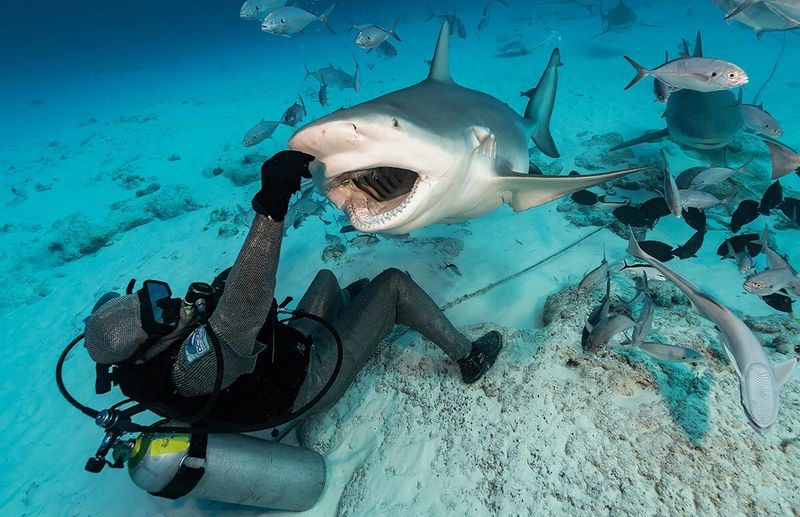
Despite their robust populations, bull sharks face threats from overfishing and habitat destruction. Conservation efforts focus on protecting their habitats and regulating fishing practices to ensure their survival.
Marine reserves and protected areas play a crucial role in safeguarding these majestic creatures and maintaining the health of marine ecosystems. Public awareness and scientific research are key components of conservation strategies, helping to preserve bull shark populations for future generations.
These efforts highlight the importance of balancing human interests with ecological sustainability.

